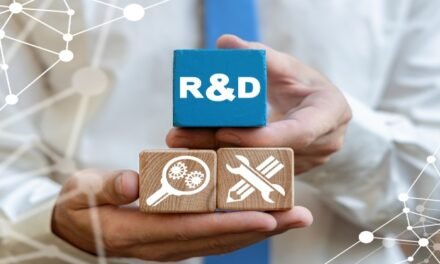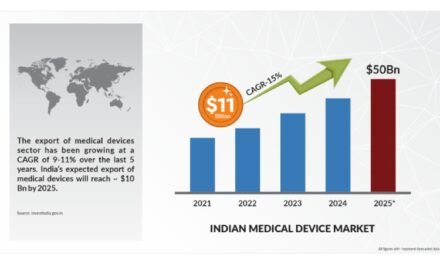
How is the adoption of AI and IoT reshaping in the medical device industry?

The adoption of Artificial Intelligence (AI) and the Internet of Things (IoT) is profoundly reshaping the medical device industry, driving innovation, enhancing patient outcomes, and improving operational efficiencies. These technologies are transforming how devices are designed, manufactured, and integrated into healthcare systems. Here’s an in-depth analysis:
1. Enhancing Diagnostics and Decision-Making:
- AI in Diagnostic Imaging:
- AI-powered devices analyze medical images (e.g., X-rays, CT scans, MRIs) for faster and more accurate detection of diseases like cancer, cardiovascular issues, and neurological disorders.
- Example: AI algorithms can detect early signs of diabetic retinopathy or lung nodules with higher precision.
- Decision Support Systems:
- AI aids clinicians by providing data-driven insights and suggesting treatment plans based on patient history and real-time data.
2. Enabling Remote Patient Monitoring:
- IoT-Enabled Wearables:
- Devices like smartwatches and wearable health monitors track vitals such as heart rate, oxygen saturation, blood pressure, and glucose levels in real-time.
- Chronic Disease Management:
- IoT devices continuously monitor conditions like diabetes, hypertension, and respiratory disorders, enabling early intervention and reducing hospital visits.
- Example: Continuous glucose monitoring systems that send alerts to patients and doctors.
3. Revolutionizing Surgical Procedures:
- AI-Assisted Surgery:
- Robotic surgical systems use AI to enhance precision, minimize invasiveness, and improve recovery outcomes.
- Example: Robotic platforms like the da Vinci Surgical System.
- IoT in Operating Rooms:
- IoT-enabled equipment monitors real-time metrics such as temperature, sterilization status, and device functionality, ensuring safety and efficiency.
4. Advancing Predictive Healthcare:
- Predictive Analytics:
- AI analyzes large datasets from IoT devices to predict potential health issues, enabling proactive care.
- Hospital Management:
- Predictive models optimize resource allocation, such as ICU bed usage, reducing bottlenecks.
5. Improving Device Efficiency and Maintenance:
- IoT-Driven Maintenance:
- IoT-enabled devices send real-time performance data to manufacturers, facilitating predictive maintenance and reducing downtime.
- Efficiency in Manufacturing:
- AI optimizes production processes by predicting equipment malfunctions and improving quality control.
6. Personalizing Patient Care:
- AI for Customization:
- AI-powered systems analyze individual health data to tailor treatments, medications, and rehabilitation plans.
- 3D-Printed Implants:
- AI aids in designing personalized implants and prosthetics based on patient-specific anatomy.
7. Enhancing Drug Delivery Systems:
- Smart Drug Delivery:
- IoT-connected devices deliver precise doses of medication, monitor adherence, and send alerts if deviations occur.
- Example: Insulin pumps and smart inhalers for asthma patients.
8. Streamlining Regulatory Compliance:
- Data Management:
- AI simplifies compliance by analyzing data to ensure adherence to regulatory requirements.
- Traceability:
- IoT enhances supply chain traceability, ensuring devices meet quality standards.
9. Increasing Accessibility to Healthcare:
- Telemedicine Integration:
- IoT devices enable virtual consultations by providing real-time health data to physicians, especially in remote areas.
- Affordable Diagnostics:
- AI-powered portable diagnostic tools bring affordable healthcare solutions to underserved regions.
10. Addressing Security Challenges:
- AI-Enhanced Cybersecurity:
- AI identifies and mitigates security threats to IoT-enabled devices, protecting sensitive patient data.
- Data Encryption:
- Ensures secure transmission of health data between devices and healthcare systems.
11. Challenges in AI and IoT Adoption:
- Data Privacy Concerns:
- Handling sensitive health data securely and complying with regulations like GDPR and HIPAA is crucial.
- Integration Complexity:
- Ensuring seamless interoperability between diverse devices and platforms.
- Cost of Implementation:
- High initial investment in AI and IoT technologies can be a barrier for smaller manufacturers.
12. Examples of AI and IoT in Medical Devices:
- Medtronic:
- AI-enabled insulin pumps with predictive glucose monitoring.
- GE Healthcare:
- AI-powered imaging systems for enhanced diagnostics.
- Philips:
- IoT-enabled patient monitors that integrate with hospital systems.
13. Future Trends:
- AI-Driven Virtual Healthcare Assistants:
- Virtual assistants that interact with patients to provide basic healthcare guidance.
- IoMT Ecosystems:
- Expanded ecosystems where multiple IoT devices communicate to provide holistic patient care.
- Edge Computing:
- AI processing data locally on devices to reduce latency and enhance real-time decision-making.
The integration of AI and IoT into the medical device industry is revolutionizing healthcare delivery by improving diagnostics, enhancing operational efficiency, and personalizing patient care. Despite challenges like data privacy and cost, the long-term benefits make these technologies indispensable for the future of healthcare. Indian and global manufacturers adopting AI and IoT are well-positioned to lead in this transformative era.




























